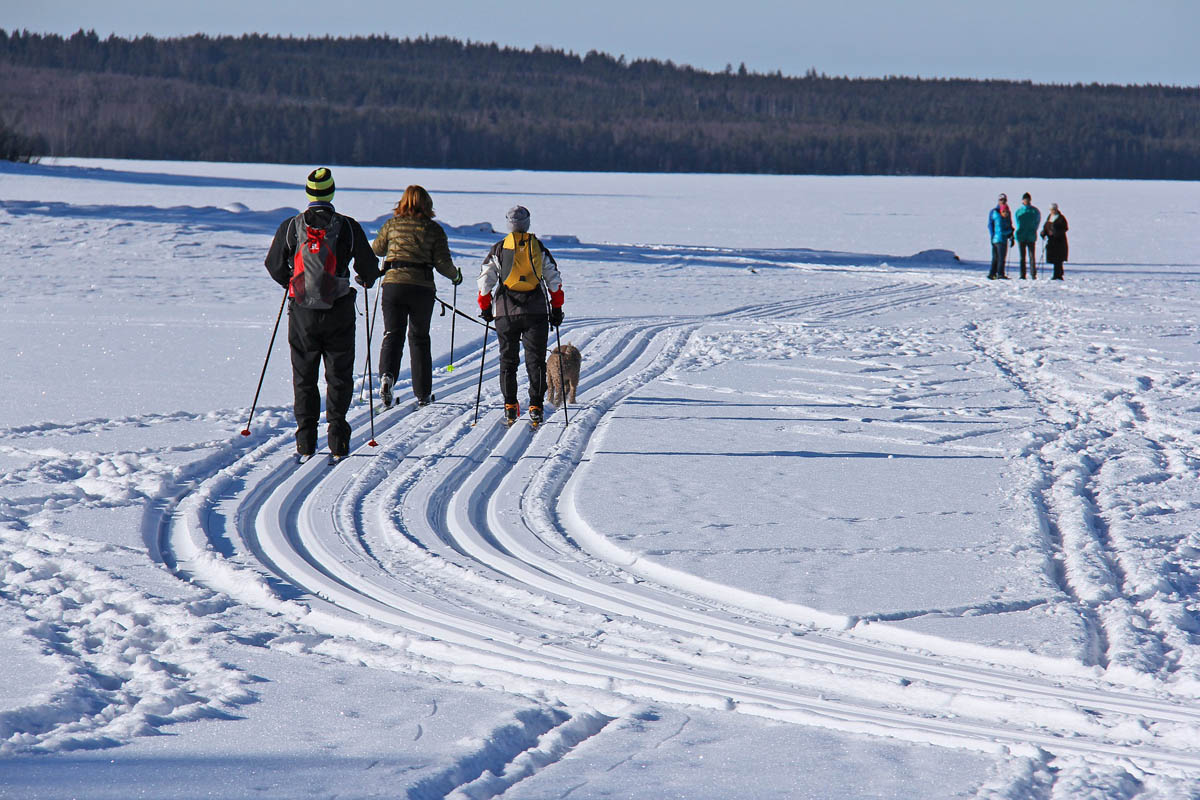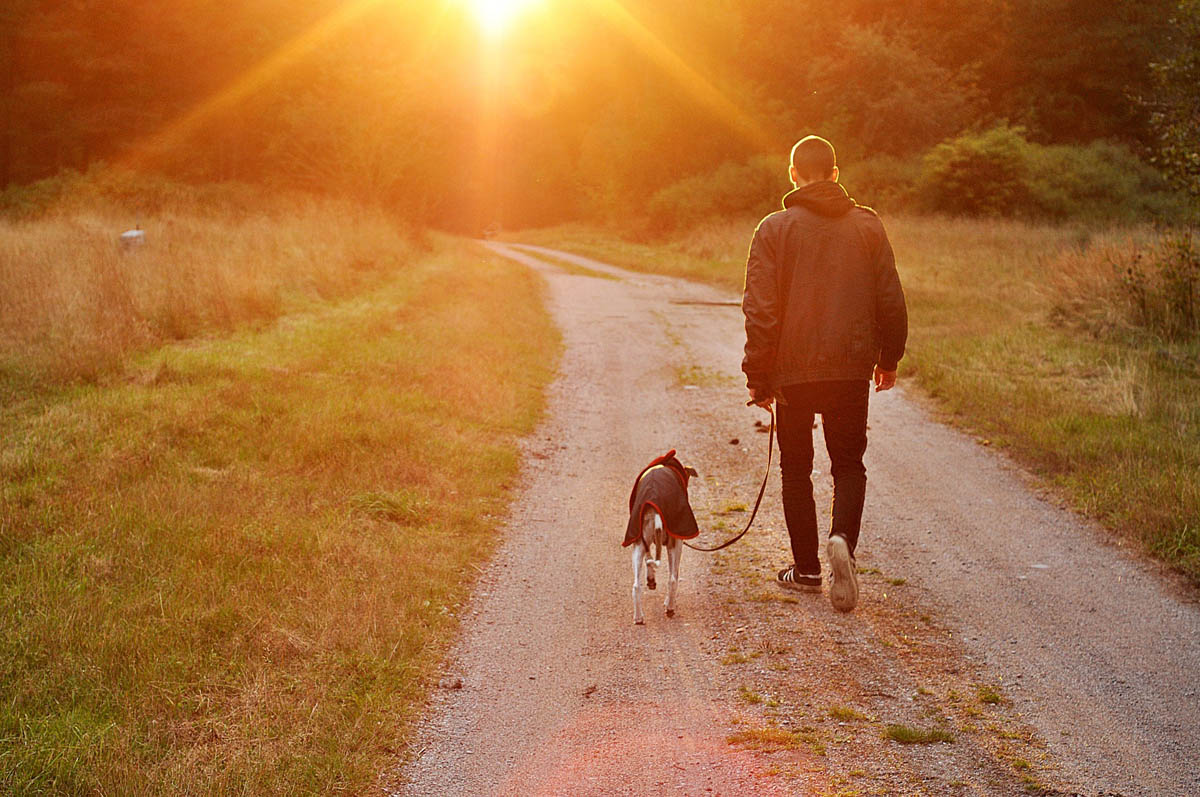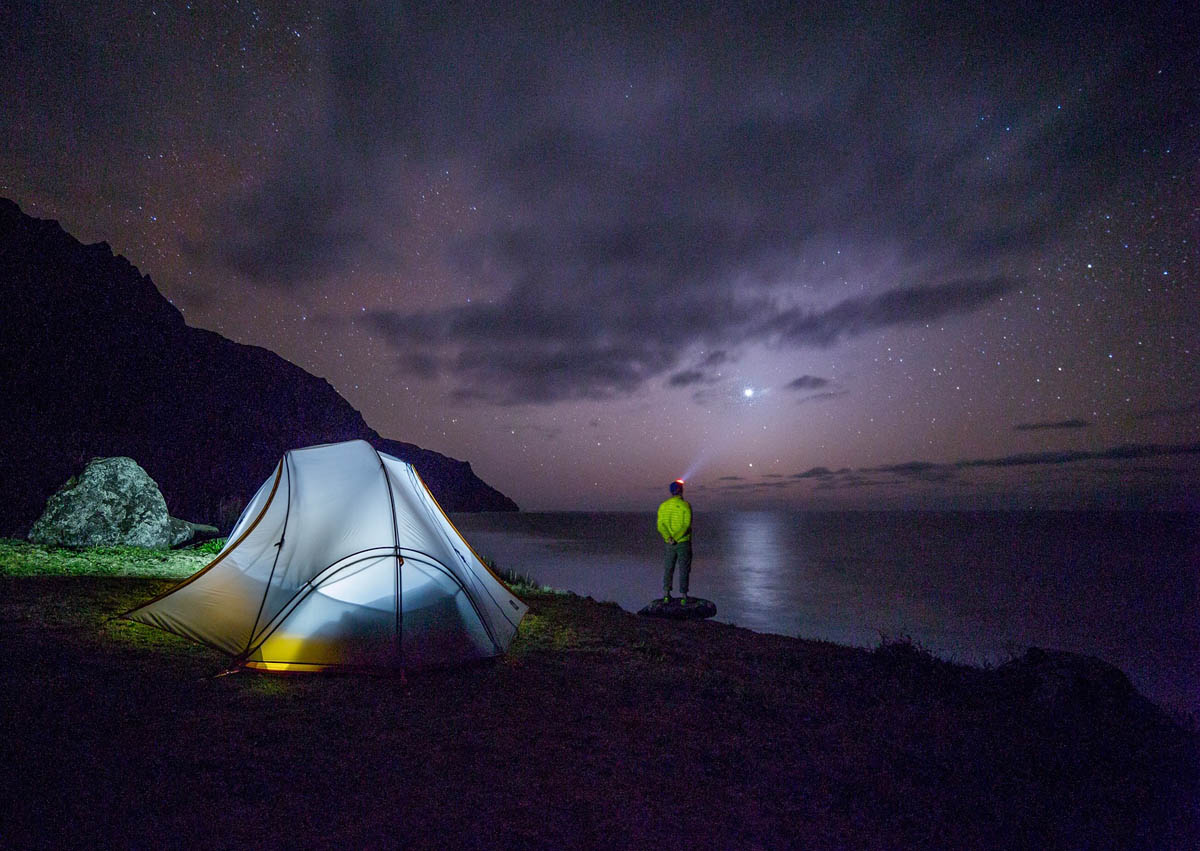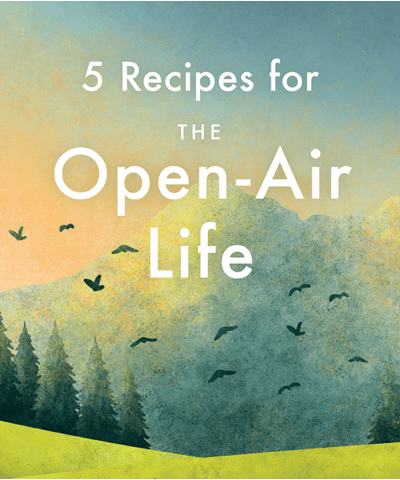Published on January 11th, 2018 Updated on May 25th, 2022 By Linda McGurk
Can I share a secret? My passion may be connecting children with nature, but due to my job as a writer I actually spend most of my day glued in front of a screen, sedentary seated in my climate-controlled office. This is the reality for many of us. We’re mostly indoors, juiced up on electronics and far removed from our original home, the natural world that sustains us. About 80 percent of the population in the developed world lives in cities, which in itself makes our human experience much different than that of our distant ancestors.
Fortunately, there’s an effective antidote to all the frenzied busyness, techno stress and physical inactivity caused by the urbanized, digital age, and it comes in the form of a tongue-twisting eleven-letter word from Scandinavia: friluftsliv (pronounced FREE-loofts-leave).
As I write in my book There’s No Such Thing as Bad Weather, friluftsliv losely translates to “open-air life,” but just like hygge (having a cozy time together) and lagom (not too much, not too little) it’s a word that lacks an accurate equivalent in English. First coined by Norwegian playwright Henrik Ibsen in 1859, the concept became a popular in Scandinavia after World War II as a reaction against industrialization and an escape from urban life. The government too realized nature’s healing potential and actively started promoting friluftsliv as a boon for public health. Today, it’s deeply ingrained in the Scandinavian cultural fabric. But what is friluftsliv exactly?
 The Swedish government typically defines friluftsliv as spending time outdoors to get a change of scenery and experience nature, with no pressure to achieve or compete. Hans Gelter, an associate professor at Luleå University of Technology, says that friluftsliv is not an activity or program with a narrow goal, but “a philosophical lifestyle based on experiences of the freedom in nature and the spiritual connectedness with the landscape.”
The Swedish government typically defines friluftsliv as spending time outdoors to get a change of scenery and experience nature, with no pressure to achieve or compete. Hans Gelter, an associate professor at Luleå University of Technology, says that friluftsliv is not an activity or program with a narrow goal, but “a philosophical lifestyle based on experiences of the freedom in nature and the spiritual connectedness with the landscape.”
In reality, friluftsliv means different things to different people, but in its original and most pure form, it can be described as the notion that returning to nature is akin to coming home.
What genuine friluftsliv is NOT:
- Teaching about nature using a specific curriculum
- Participating in a wilderness therapy program or getting a “nature prescription” from a doctor
- Using nature as a playground for outdoor recreation, for example by participating in competitive or adventure sports
- Changing, destroying or taking control of nature
- Using motorized vehicles in nature
What genuine friluftsliv IS:
- Learning the ways of other living organisms, and understanding your own place in the natural world with nature as the teacher
- Developing a love and respect for nature through direct experience
- Using all senses to create a deep sensation of connectedness with nature
- Rediscovering our natural, biological rhythms through nature immersion
-
Growing self-esteem as well as physical, social and survival skills in the natural world throughout life
So why is friluftsliv so effective against stress and other modern ails? According to Gelter, when we venture into wild places, our brains receive the stimuli they were originally developed for and we regain our natural rhythms and energies. This in turn explains why we feel harmonious and happy in nature.
“When looking into a fireplace we feel the flames alive and attracting our attention. No artificial light, like the cold mechanical lifeless light of a flashlight, will ever attract us in the same way,” he explains.
This year, I’m going to dive deep into the philosophy of friluftsliv both in my personal life and here on the blog. Why? Because having my body and mind deeply rooted in this practice is literally what saves my sanity on a daily basis. It also guides me on my parenting journey, since I believe that giving my children the gift of friluftsliv is one of my most important responsibilities. We may not be able to completely escape the pressure of modern life, but friluftsliv gives both adults and kids a way to recuperate from it and connect with something much greater than themselves.
I hope you will join me on this journey!






Excellent post and very well said! Ever since reading about this concept in your book, I have been drawn to it. Like you, it’s how I grew up (though, we didn’t have a word for it) but I have not been living it in recent years. And I feel that it’s harder for people to get into that kind of flow with nature when they have never truly experienced it before. Can’t wait to see how you will share your knowledge since we all so desperately need more friluftsliv.
Thank you, Noreen! And I agree with you that it’s much harder to get into it when you don’t grow up with it, and that’s why it’s so crucial to connect children with nature early on. The next generation of parents will be much more disconnected from it than we were, and I think friluftsliv can help bridge that gap!
I love this! Having read a plethora of Scandinavian books the past two years (trying to connect to ancestral roots), this concept, friluftsliv, stood out. I will definitely be joining you on the journey to bring more friluftsliv into my life in 2018.
Wonderful, Mandy! Looking forward to have you following along. I can tell Scandinavian culture is really hot right now and obviously friluftsliv is one of my favorite aspects of it as well!
Great post! I’m thinking about ways to incorporate this into my everyday (or at least every month! routine)Thank you 🙂
That’s great, Bekah! I believe that creating a routine is key to making nature time a habit. It doesn’t matter how small you start, as long as you get out there. Good luck!
I grew up in the high plateaus of Colorado and the mountains of Wyoming. Outdoors was where I always wanted to be. All summer and every day after school I would head to the hills. It never occurred to me that I was making a connection to nature. I was just trying to keep warm and get a higher view of my surroundings, but the smell of sage and pine, the lichen stained stones, the lizards, rabbits and the willows became part of me without even noticing. I’m now 68 years old and even though I took my children camping as often as I could, and they still love going, I see it’s not the same with them. They go for the activity, not the nature, and most of my grandchildren are still young enough that they love the while experience. You inspire me, so my new goal this year is to spend at least half a day a week in the woods, and take a grandchild with me as often as I can.
Rudy, that’s a wonderful goal. I can just about guarantee you that your grandkids will remember those days and treasure them dearly as they get older.
Here in the UK the weather is grey and damp and through a bout of illness we haven’t been in nature much. Reading your writing always makes me aim to take my kids in nature everyday. You have motivated me again. Thank you x
Oh good! I know how tough it can be to motivate yourself on those gray, dreary days – I struggle with it too. But I always think of how beneficial it is to my kids and how good I feel afterward, and ultimately that’s what gets me out the door even when it’s cold, dark, rainy or all of the above!
Thank you for such an in-depth explanation!
You’re very welcome!
I just heard about you and this site 15 minutes ago. I love it. This is the first winter in New England where I have not felt trapped and crazy. The biggest factor is my warm gloves and hat. Every single day, the children and I go out. Even when it was -45F with the windchill, we went out and felt the wind take our breath away. If the blue jays, chickadees, and crows can sing, we should go and listen.
Oh good! So glad you found me:) And the clothing really makes all the difference – I rarely venture outside without snow pants if it’s below 32F!
I really love this. When we were young and camping with my dad, he would tell us that when he was growing up, a camp fire was his cartoon. People literally are drawn to the natural light of a fire. I’ve never heard of friluftsliv and think it a wonderful philosophy! Thanks for the post.
Thank you, Kayla! It’s interesting that you mention the campfire because a friluftsliv researcher whose work I’ve read talks about how an electric light never captures our attention like a campfire does and it’s so true:)
I think that the focus on direct experience of nature for children while they are young is crucial in our modern education system. It is no good teaching a child about cycles of nature in science if they have never seen new buds growing in spring, or autumn leaves going soggy in late autumn and winter. I’ve discovered the world of Forest School both as a business and for my own three children. It is wonderful to have repeat visits to the same woodland and see the changes that happens in nature, without being specifically taught about it. I couldn’t agree more that we need to give children (and adults!) an antidote to the modern world, and coping strategies that they can use over their lives. If getting outdoors for unstructured time daily becomes their coping strategy then how valuable that will be for happiness, self confidence and well-being? Thanks for a great article.
Lois x
Yes, direct experiences in nature are definitely crucial! Forest school is such a wonderful model for this and I’m glad that it’s become so popular in the UK. Keep up the good work, both at home and your business:)
I love your site. We live in Indiana between Bloomington and Indianapolis in the suburbs, and began homeschooling. I am learning more and more about Charlotte Mason style and wanting that for my children. Nature is a huge component, and letting children just enjoy, observe and explore on their own. However, I’ve never been much of an outdoors girl (always in suburbs 🙁 ) but praying we can change that for my 5 girls. We already started out our new year by heading into nature yesterday in the cold, gray gloom. My girls said, yay we haven’t hiked in a while, I can’t wait (we have new baby this year) as we pulled into the park and it was so encouraging. Making plans for more outside time now-though bought some new outdoor gear on the way home. Need to be better prepared in future! Thanks for all you share
Hello Heather! It makes me so happy to hear that you’ve committed to getting outside with your girls:) There are a lot of opportunities for outdoor recreation in the Bloomington area, but I’m sure you know that already! And I’ve heard a lot of good things about Charlotte Mason education but I have to admit I’m not super familiar with it. It sounds like it’s a good fit for your family and that’s what counts. Best wishes for a Happy New Outdoor Year:)
I love your website and articles. This has made me want to go camping and sit round a real fire in the woods!! Need to convince my camp phonic husband now. The kids are up for it though. Thanks so much. Karen Shah.
Thank you for your kind words:) I hope you can convince your husband to go camping with you – it’s such a great thing to do as a family!